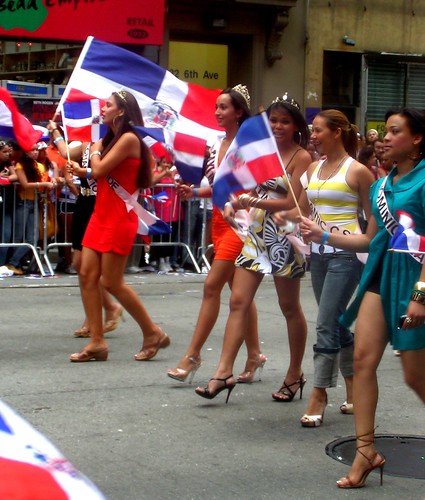
Despite not being lined with beautiful beaches and luxurious resorts, La Vega remains one of the cities with greater attraction for domestic tourists for Dominicans. Within its territorial extension of about 2.287 square kilometers, the province interesting hidden treasures and historical stories, perhaps envied by anyone who feels pride in his homeland. Cheerful and helpful people, so much so that once a signature liquor was motivated by highlighting its benefits through the quaint phrase: "In all Lavega're good, we are all happy, you know ..." The Vega has an exuberant nature, numerous rivers and two major cities: Constanza and Jarabacoa, nestled in the hills of the Cordillera Central, more than 500 meters above sea level. It's a town that has preserved many traditions. Its people still share the simple place under the shadow of an old and generous flamboyant or simply trying to encourage their faith by the Catholic religion, after a promise to walk barefoot up the hill of Santo Cerro, one of the country's most important shrines.
For the number of athletes that has "calved" this land was called "Olympic City". But it has not only been the cradle of outstanding athletes, but there were born leading journalists, doctors, artists, writers and presidents, as is the case of Juan Bosch. As you quote the book "Fragments of fatherland", issued by the Reserve Bank, one of the treasures of this town is La Vega Vieja, which was destroyed by a violent earthquake, leaving very little standing in what was his outstanding architecture. La Vega Vieja was declared a National Historic Park next to Holy Hill in 1977. According to data within their treasures La Vega Vieja La Fortaleza La Concepcion has a strong name, the Franciscan monastery and two cemeteries. it cites the book that has a cistern, several furniture and decorative objects such as candlesticks, crucifixes, cutlery, pottery, thimbles, needles and plant decorations.
In 1795, La Vega was a vast territory and was divided into the following parishes: Cotuí, Bonao, Samana, Sabana de la Mar, Moca, San Francisco de Macoris and Angelina. With this factor, I have an idea how big this territory. According to "Fragments of country", the cult of the Virgin of Las Mercedes is the largest cultural expression that arises from the province of La Vega. This city is located in the Central Cibao region. An important part of the province belongs to the so-called Cibao Valley or La Vega Real. It is one of the oldest cities in the continent, founded in 1495. Its soil is very fertile, is devoted primarily to the production of rice, potatoes, garlic, cassava, red beans, bananas, vegetables and flowers. In the area, livestock, took one of the most important positions nationwide. The Dominican carnival which has not really heard of vegan carnival. This festival is a tradition not only for vegans, but also for inhabitants of other nearby villages and especially the capital. Considered the most ornate and elegant in the country, this carnival is held every week in February of fines in the Parque de las Flores.
Jarabacoa and Constanza own light shine Jarabacoa and Constanza are two cities that despite belonging to La Vega own light shine. Jarabacoa is known for its mountain tourism in the growth process. Their idyllic landscape has inspired entrepreneurs, artists and institutions to build on her summer houses or tourist cabins that ultimately contribute to further beautify the area. Jarabacoa Constanza Both are scenarios to delight for its spas, rivers, waterfalls and valleys. Each is especially the freshness of its climate, which makes them more temperate areas of the country. According to the Tourism Ministry, in February 2002 in La Vega had about 25 hotels, with a bid of 450 rooms. La Virgen de Las Mercedes On 24 March 1495 in La Vega was a battle that had much significance in the history of the island. This is the battle of La Vega Real, waged by the Spanish army, commanded by Christopher Columbus. Legend has it that the night before the battle appeared in the camp of the Spanish Virgin of Las Mercedes, which would have guaranteed them victory in the war. Since then the country started in the cult of the Virgin of Las Mercedes, which is considered the patroness of the Dominican Republic. Popular Holidays Fragments As explained homeland, La Vega is special veneration of three virgins and that there are two parties employers: the Immaculate Conception, which culminates on December 8 (which also takes place in the municipalities of Cotuí, Ramon Santana and hat Peravia province), and Nuestra Señora de la Antigua, which culminates on 16 August (which also held in the town of Jarabacoa).




